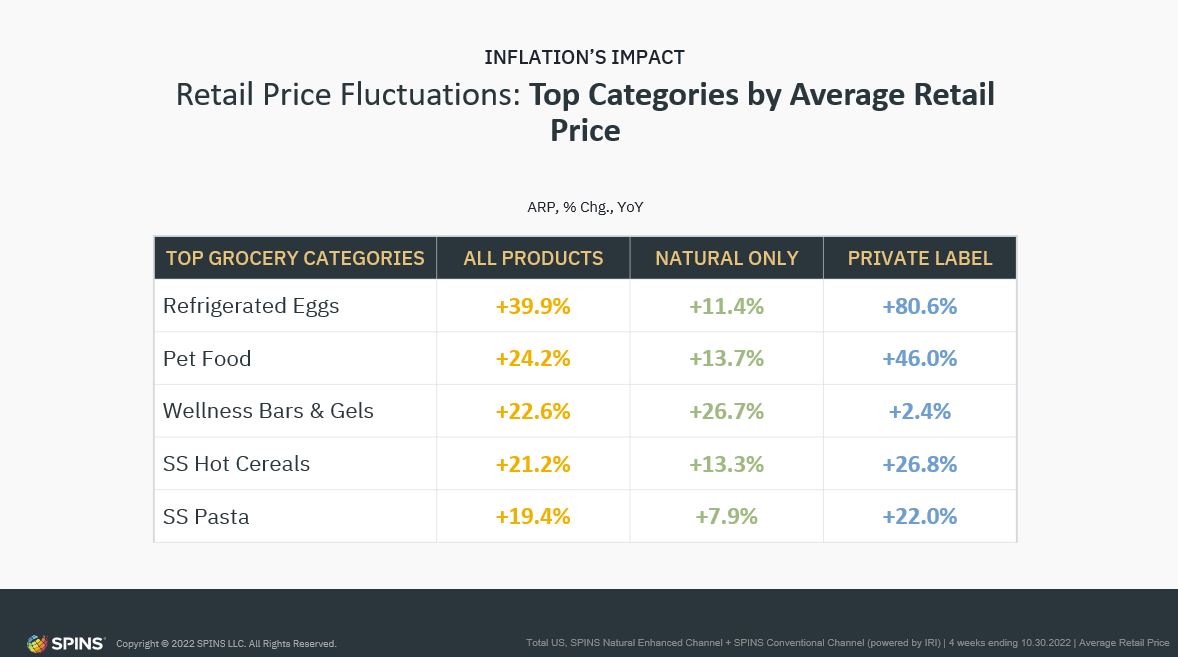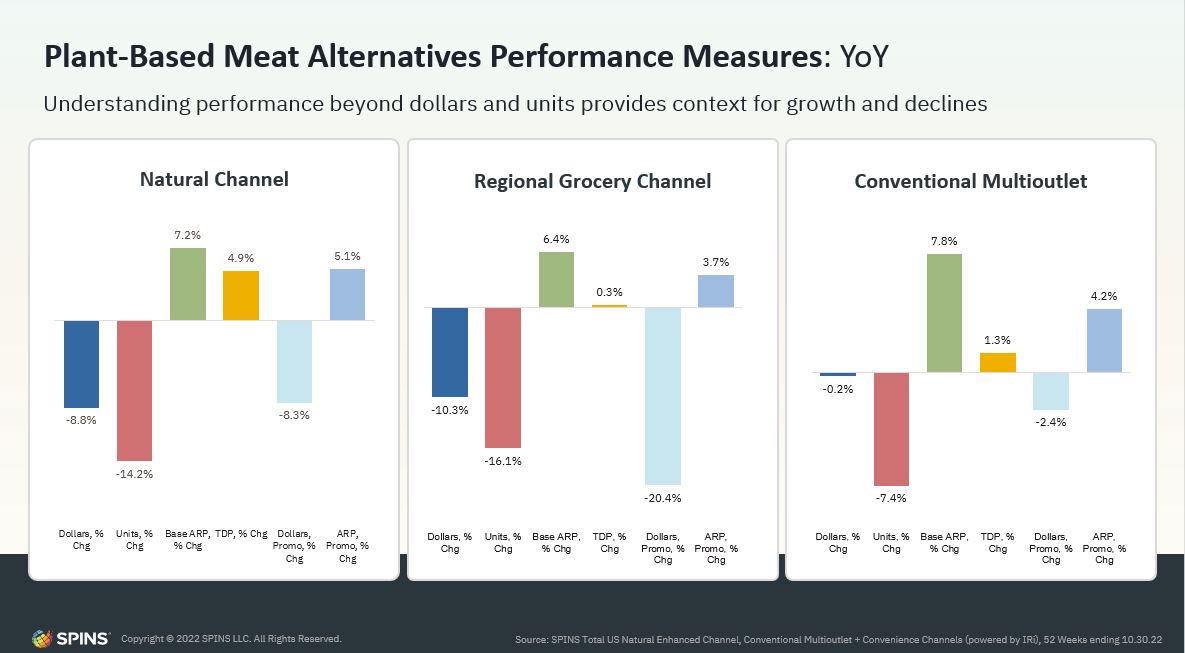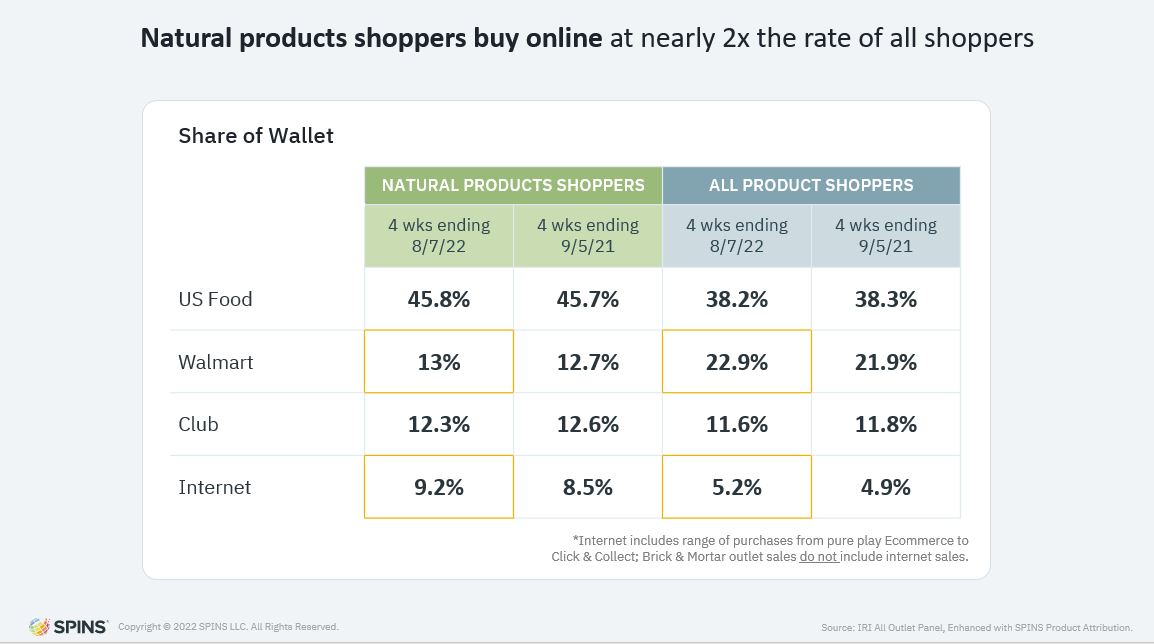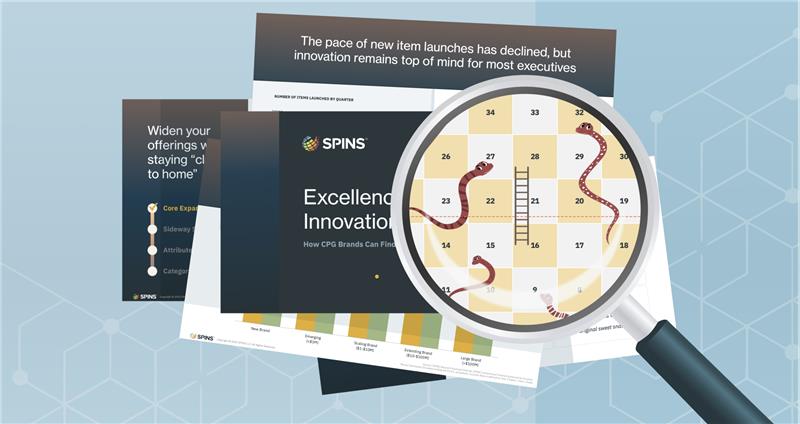Inflation, sustainability, and shopper trends shaped the market in 2022.
The past 12 months have been eventful, exciting, and stressful. Unlike the previous two years that left everyone unmoored, 2022 was a year of moving forward. Shoppers returned to stores, students were in school, and workers settled into their permanent routines. The pandemic still affects many people’s lives, but one topic rose above everything: inflation. Even as new trends arose and innovative products hit the shelves, inflation was part of the conversation and the unmistakable star of 2022.
Inflation Dominated the Conversation
The supply chain concerns that took center stage in 2021 continued into 2022—and continue today—but they took a backseat to inflation discussion. Retailers felt inflation’s effects by way of fuel surcharges from distributors, reduced delivery frequency, and smaller promotional spends. Plus, the rising costs of raw materials, fuel, and labor affect everyone from shoppers to manufacturers. The rising cost of goods was certainly on shoppers’ minds as they stretched their food budgets.
According to SPINS data, the average retail price (ARP) rose across categories and channels. With some exceptions, natural products in food and beverage resisted the dramatic price increases that hit all products and private label. Natural products already demand a higher premium than most other goods, which means their moderate price increases gave less sticker shock to shoppers and maybe even attracted new ones who are interested in wellness. Meanwhile, private label products start with a lower price point that can handle a more drastic increase and still be the most affordable option on the market for shoppers with tight budgets.

Sustainability Is No Longer Optional
Finding recyclable products and avoiding single-use packaging have long been common concerns for shoppers, but now environmental concerns have grown and become more popular. According to IRI OmniConsumer Survey Solutions from June 2022, 77% of all shoppers believe sustainability is important when selecting products—an 8% increase from the previous year. Younger generations focus more on sustainability solutions than their older shoppers, suggesting that these topics are going to remain top priorities for decades to come. That same survey found that:
- 66% of Gen Z and Millennials consider reducing byproducts/waste vs 62% of older generation
- 59% of Gen Z and Millennials want to minimize carbon footprint/greenhouse gases vs 54% of older generations
- 59% of Gen Z and Millennials aim to minimize negative environmental impact vs 55% of older generations
Although sustainability can include issues that affect the environment as well as social structures, shoppers are focusing primarily on the former. According to IRI OmniConsumer Survey Solutions from June 2022, shoppers associate ideas such as “renew, reuse, recycle,” conservation, and reduction of byproduct/waste with sustainability. By comparison, shoppers were less likely to consider social factors (acting in ways that benefit society at large, uniting as a community for the greater good, and protecting human rights) as related to sustainability.
Incorporating sustainable attributes into their products and processes is smart business and shoppers want to know about it. This is why brands, retailers, and suppliers are finding ways to communicate relevant attributes to shoppers. Trusted third-party certifications and labels such as Non-GMO Project, Certified B Corporation, Carbon Trust, and others are valuable shorthand that lets shoppers know which products meet their standards.
Plant-Based Products Had an Uneven Year
Meat alternatives skyrocketed in 2020, with supply chain issues making animal meats harder to find. Shoppers turned to the nearest alternative in the meat freezer and caused a surge in demand. Today, sales for meat alternatives are down, and inflation is part of the problem. Plant-based manufacturers have higher costs and their higher retail prices can harm their appeal compared to more affordable animal meats. Plus, flexitarian shoppers might be cautious about paying a high premium for a meat alternative when food budgets need to stretch.
Those flexitarian shoppers have the potential to influence the market even more than vegan and vegetarian shoppers. The current plant-based consumer isn’t necessarily on an animal-free diet. They might have an animal-free meal or day to reduce their animal-based meat and dairy intake, but they’re not trying to eliminate it completely. And thanks to an innovative array of hamburger, sausage, seafood, and chicken alternatives, eating plant-based is easier and tastier than ever. These flexitarians might not be the classic idea of a plant-based shopper, but they comprise a larger portion of the shoppers than vegans, and therefore, they have more room to adjust and pivot their shopping habits as needed. That’s why, in 2022, we saw both dollars and units decline, while prices have increased, and promotional dollars have declined. While these products are performing best in conventional, the picture is similar across channels.

Shoppers Returned to the Stores
Shoppers were ready to walk into their local stores and spend more time in a brick-and-mortar store than they had in the previous two years. Part of that might have come from shoppers feeling safer, but inflation was also a factor. Shoppers needed to trim excess costs, and that means heading to the store to cut back on home delivery fees. That doesn’t mean home delivery is irrelevant, nor will shopping look exactly as it did pre-COVID.
Natural products shoppers are a perfect example of how post-COVID shopping habits diverge. Natural products shoppers buy online at nearly twice the rate of all shoppers. Yet, these shoppers spend nearly half the dollars of all product shoppers at Walmart. The shopping trends we saw this year prove that shoppers are not homogenous and need to be catered to as they prioritize a variety of factors ranging from inflation prices to convenience.

While inflation continues to slow, it will likely be a hot topic for much of 2023. It will stay on shoppers’ minds and influence what they buy, how much they spend, and where they shop. The trends we saw take center stage this year will evolve, and retailers and brands alike need to consider how they will help shoppers navigate the eventful year ahead of us.





